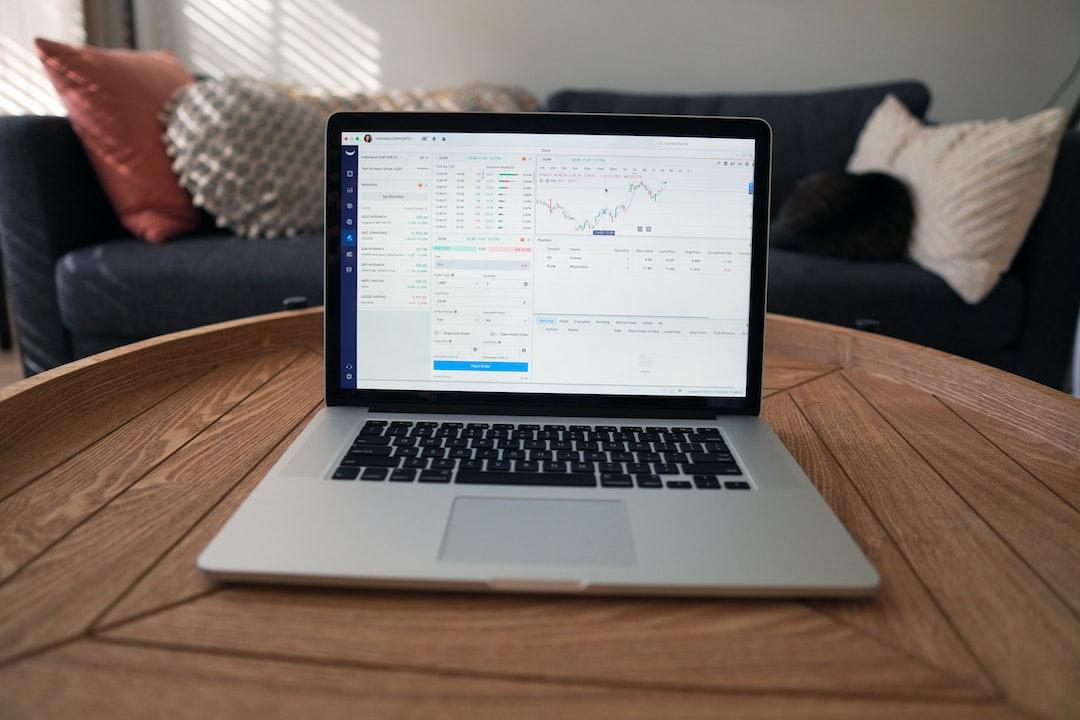Why did IOSG Ventures invest in ether.fi? What is the future development trend of LRT?
Summary:
Recently, there has been a lot of discussion surrounding EigenLayer’s re-staking and the Liquid Restaking Token (LRT). Users have been speculating about potential airdrops from various protocols, and re-staking has become a hot topic in the Ethereum ecosystem. This article aims to discuss the author’s thoughts and perspectives on LRT.
The underlying logic of LRT:
LRT is a new asset category that has emerged around EigenLayer. LRT and LST (Liquid Staking Token) have a similar goal of “liberating liquidity,” but LRT is more complex and diverse due to its different underlying asset composition and dynamic nature. In terms of ETH-based considerations, if Ethereum staking under LST is viewed as a currency fund, then LRT can be seen as a Fund of Fund for Active Validation Services (AVS). Comparing LST and LRT is a quick way to understand the underlying logic of LRT.
1. Investment Portfolio:
LST only has Ethereum staking as its investment portfolio, while LRT has a variety of investment options. LRT allows funds to be invested in different AVS, providing economic security and different risk levels. The fund management approach and risk preferences of different LRT protocols also vary. LST is passively managed, while LRT is actively managed. LRT may offer different management strategies for different levels of AVS to cater to users’ preferences for returns and risk.
2. Yield, Source, and Composition:
LST’s yield is currently stable at around 4.9% and comes from the shared revenue of the Ethereum consensus layer and execution layer, composed of ETH. The yield of LRT is uncertain but is mainly derived from fees paid by AVS and may be composed of AVS tokens, ETH, USDC, or a combination of the three. Most AVS reserve a few percentage points of the total token supply as incentives and security budget. If an AVS is already operational before token issuance, it may also pay in ETH or USDC, depending on the specific circumstances. This means that restaking can be understood as the process of staking ETH to mine third-party project tokens.
Since AVS tokens are involved, the risk of token volatility is greater than ETH, and the APR will fluctuate accordingly. AVS may also experience rotation in terms of entry and exit. All these factors contribute to the uncertainty of LRT’s yield.
3. Penalty Risk:
Ethereum staking has two types of penalties: Inactivity Leaking and Slashing, such as missing block proposals and double voting. The rules are highly deterministic, especially when operated by professional node service providers. On the other hand, LRT protocols need to trust the correct software coding of AVS and have no objections to penalties to avoid unforeseen punishments. Since there are various types of AVS, most of which are early-stage projects, there is inherent uncertainty. Additionally, AVS may undergo rule changes as their business develops, such as iterating more features. Risk management also needs to consider the upgradability of AVS Slasher contracts and the objectivity and verifiability of penalty conditions. As LRT acts as an agent for managing user assets, it needs to consider these aspects and choose partners carefully.
EigenLayer encourages AVS to undergo complete audits, including the code, penalty conditions, and interaction with EigenLayer’s logic. EigenLayer also has a veto committee based on multi-signatures for final auditing and checks on penalty events.
The rapid growth of LRT in the short term:
EigenLayer has adopted a phased approach to unlock LST but has no restrictions on Native Restaking. Restricting LST may be a way of using hunger marketing tactics, but more importantly, it promotes the growth of Native Restaking. After LST is restricted, users can only turn to third-party LRT protocols to participate in restaking, which greatly promotes the development of LRT protocols. Currently, around 55% of the ETH flowing into EigenLayer is through LRT.
Another implication is that Native Restaking can provide Ethereum Inclusion Trust, which is advocated and provided by EigenLayer. In addition to Economic Trust and Decentralization Trust, Ethereum validators can make commitments by executing AVS in addition to staking commitments.
The competition landscape of LRT:
Integration into DeFi is the main competition among LRT protocols to make liberated liquidity useful. Although theoretically, AVS needs to calculate their required economic security to reach a certain threshold of safety, the current practice of most AVS is to allocate a portion of the token supply as incentives. Due to the rotation and entry of different AVS, incentives depend on the price of AVS tokens, resulting in greater uncertainty for LRT assets compared to LST (LST has a stable “risk-free rate” and good expectations of ETH price), making it difficult for LRT to become a “hard currency” like stETH in mainstream DeFi protocols.
Ultimately, as a staking protocol, the liquidity and TVL of LRT will be the primary evaluation criteria for DeFi protocols, followed by brand and community, among others. Liquidity is reflected in the withdrawal time cycle. Typically, it takes seven days to exit EigenPod, followed by a certain amount of time to exit Ethereum staking. Protocols with larger TVL can establish better liquidity, such as the Liquidity Pool Reserve operated by Etherfi, which provides fast withdrawals (eETH -> ETH).
However, it is still too early to discuss the integration of mainstream DeFi protocols before the launch of EigenLayer’s mainnet because many things are still unknown.
On the other hand, recently, Ether.fi released a meme token tweet called $ETHFIWIFHAT to promote the token’s launch, sparking speculation. Swell uses Polygon CDK, EigenDA, and AltLayer to build zkEVM L2, with its LRT rswETH serving as the gas token. Renzo focuses on multi-chain integration on Arbitrum, Linea, and Blast. Each LRT protocol will likely introduce its own differentiated approach.
However, whether it is LST or LRT, the homogeneity is relatively high. Although LRT has more room for development compared to LST, even if an LRT protocol introduces a new idea to the market, competitors have the ability to emulate it. The author believes that the moat lies in the consolidation and improvement of TVL and liquidity.
Etherfi currently has the highest TVL and the best liquidity, which gives it a greater advantage in attracting new funds if all the airdrop expectations of LRT protocols are met. (In this regard, the adoption of institutional users should not be ignored, as 30% of Etherfi’s TVL comes from institutional users).
After the airdrop event ends, the landscape of LRT could be completely reshuffled, and there will be more competition among LRT protocols for users and funds (for example, after Etherfi’s airdrop distribution is completed, some funds may immediately flow to other platforms). LRT’s stickiness to users is not strong until EigenLayer is fully launched on the mainnet and AVS starts generating returns.
Sustainability of LRT:
The sustainability of LRT can be seen as the sustainability of the EigenLayer system because the yield from Ethereum staking will always exist, while AVS may not. A frequently asked question is: With the current TVL of 11 billion, how can EigenLayer provide a matching yield (e.g., 5% per year)?
The author believes the following points are relevant:
Although EigenLayer’s TVL reached 11 billion before the mainnet launch, even surpassing AAVE, there will be a period of mean reversion adjustment after a series of airdrops related to various protocols. In general, short-term yield considerations do not require too much calculation.
Secondly, the yield provided by each AVS token, its sustainability, and volatility are different. Each staker has different risk preferences and pursuit of returns, and there will be market-driven dynamic adjustments in this process (e.g., more ETH staked in a certain AVS will reduce the yield, prompting stakers to turn to other AVS or protocols). Therefore, the required yield cannot be simply calculated based on the percentage of the total TVL.
From a medium to long-term perspective, the sustainable development of the EigenLayer ecosystem relies on demand, which requires sufficient AVS to purchase economic security and maintain sustainability. This is also related to the quality of AVS projects, token performance, and incentive mechanism design. Currently, no definite comments can be given.
Finally, regarding the future landscape of LRT, the author has the following observations:
Despite intense competition, LRT remains the preferred direction for investment layout in the primary market of the EigenLayer ecosystem. When investing in AVS within EigenLayer, the investment logic should consider the investment logic of this intermediary software, which is no different from launching products using EigenLayer. There may be dozens or even hundreds of AVS built on EigenLayer in the future, so the concept of AVS is not uncommon. Node service providers have already occupied this direction. LRT, on the other hand, is closer to users, serving as an abstraction layer between users and EigenLayer, with attributes of staking and DeFi. As an allocator of assets, LRT has a greater say in the ecosystem. In the overall layout of the EigenLayer ecosystem, attention is also given to developer tools, anti-slashing key management, risk management, and public goods, among other areas.
Currently, the proportion of participation in EigenLayer’s restaking through LRT and LST is approximately 55% and 45%, respectively. It is expected that as EigenLayer gradually develops, the advantages of unlocking LRT liquidity will become evident, and this proportion may reach around 70:30 (assuming some conservative whales and institutions still choose passive stETH holdings). Of course, the risks of LRT should not be ignored. Due to the nested asset structure, extreme market conditions, such as depegging, may pose systematic risks. In the long run, the author hopes to see the development of AVS within the EigenLayer ecosystem, providing relatively stable underlying structures and returns for LRT.
___
This article is an original content by IOSG, for industry learning and communication purposes only, and does not constitute any investment reference. If you need to quote, please indicate the source and contact the IOSG team for authorization and reprinting instructions.

Related Reports
Making too much money? Sun Yuchen shouts “Don’t want to work hard anymore”! Earned 17.25 million pounds from ether.fi airdrop, suspected investment in $BOME
Sun Yuchen restakes 120,000 ETH in ether.fi! Diving into the Ethereum restaking track
TVL exceeds $3.6 billion: An overview of 6 Ethereum restaking protocols – EigenLayer, ether.fi, etc.
Top-tier crypto investment a16z explains why we invest in EigenLayer


